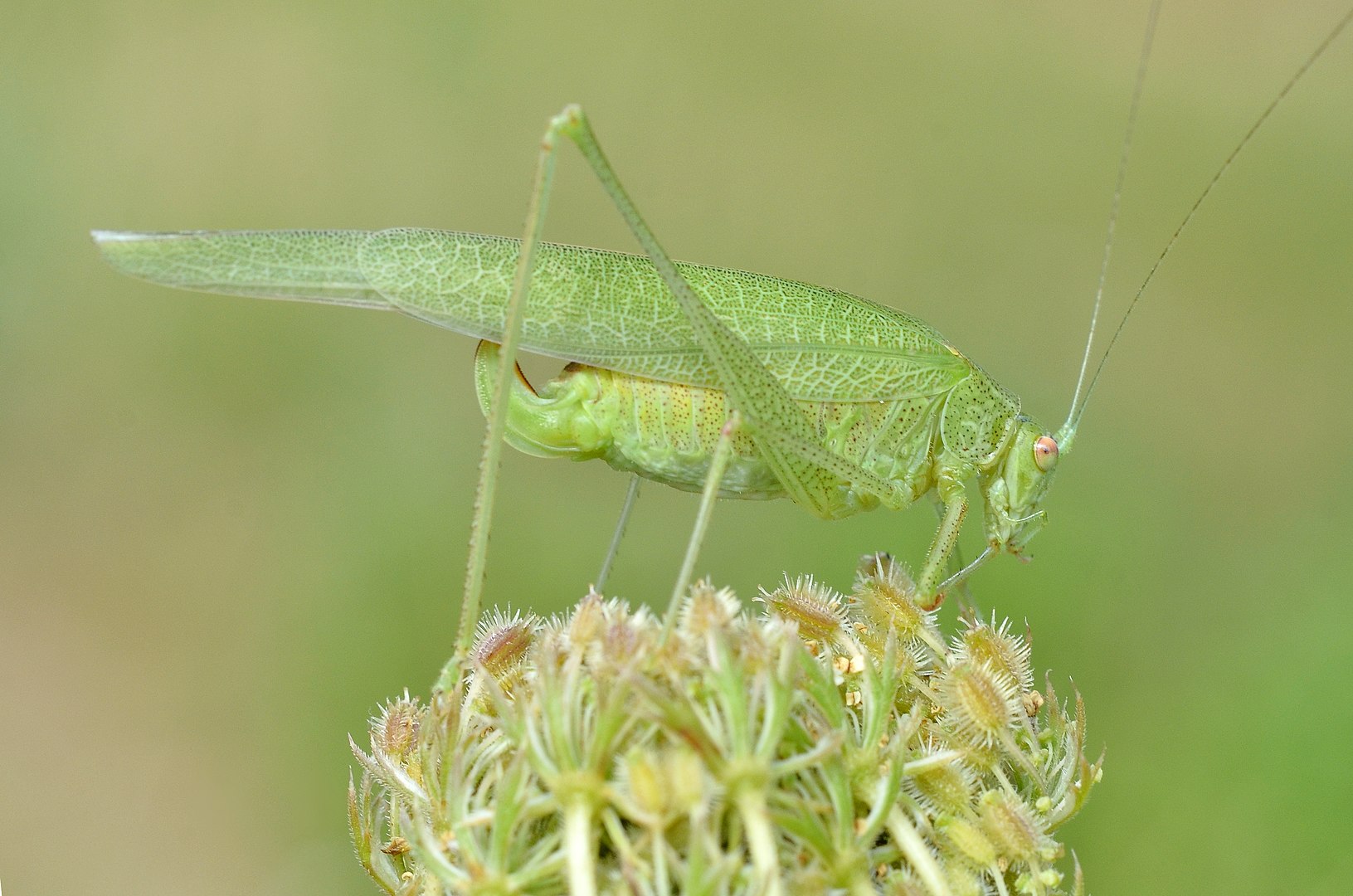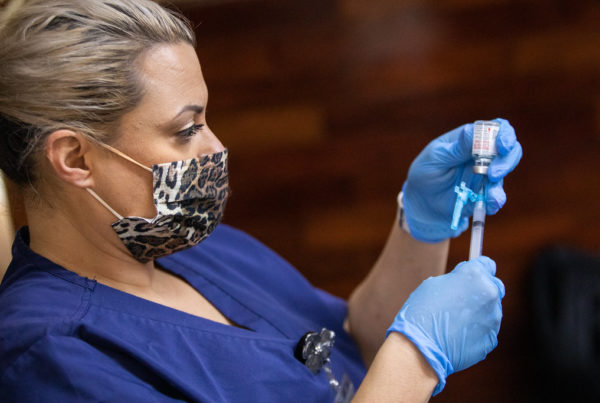The false katydid is also known as the bush cricket or the long-horned grasshopper. And even if you can decide on a name, you’ll have to decide on an exact species. Wizzie Brown, a program specialist with the Texas A&M AgriLife Extension office, says there are about 6,400 species worldwide.
The Looks
“They look like grasshoppers, but these have really long antennae and sometimes their antennae are actually going to be longer than their body if you kind of push them back over their head. So these are typically going to be about an inch to two-and-a-half inches when they are adults. But there are some of these that can get really, really big and grow up to five inches. These are typically going to be a green to a brown color because they are going to use their coloration and body shape to help camouflage them. A lot of times their shape is going to be very lifelike. And so if they’re sitting on a plant, it just looks like a leaf.”
The Sound
“So the males of the false katydid are going to make a sound, which is where they get their name. There is a species, the common katydid, that comes from the male song and it makes a sound that sounds like ‘katydid’. The songs are made by rubbing the wings together and that is called stridulation. And the cool thing is each species of katydid is going to have a unique song. And so if you’re an expert on this, or you want to become an expert on this, you can actually start to differentiate katydids by the songs that you hear. It’s very similar to identifying birds by birdsong.”
What You Might Notice On A Female
“The females are going to hear the male’s song because a lot of times they’re doing that song to attract a mate for mating purposes. And so the female actually has a flattened plate on her front legs. That is called a tympanum. And that will actually vibrate with the air movement when we have those sound waves moving through. And so they’re actually going to be able to pick up that sound and kind of figure out where those males are… The other cool thing that you will see often on female katydids is called an ovipositor, which is essentially an insect egg-laying structure. But it can be very obvious on a katydid because these are often going to be a sword shaped structure that looks really funky. And a lot of people think that there’s something wrong with it. It’s just that’s the female and she’s going to lay eggs.”
The Lifecycle
“[The females] are going to either lay eggs on plants or in plants -– like in plant tissue – or they will lay them in the soil. And the nymphs are going to hatch out in the spring time. And we typically have one generation per year. So we’re going to look for those little tiny katydids. They are going to look very similar to the adults, but they don’t have fully developed wings and they’ll go through several stages until they reach that adult stage. And usually that’s going to hit towards the middle summer to late summer because then they’ll find their mate and they’ll lay eggs. Now, of course, we have other grasshoppers and other orthopterans that are going to be in various stages, pretty much spring through fall here in Texas. But this one, one generation per year is the false katydid.”
Something Bugging You?
If you have a question for our insect expert, send us a line and we’ll pass it along!















